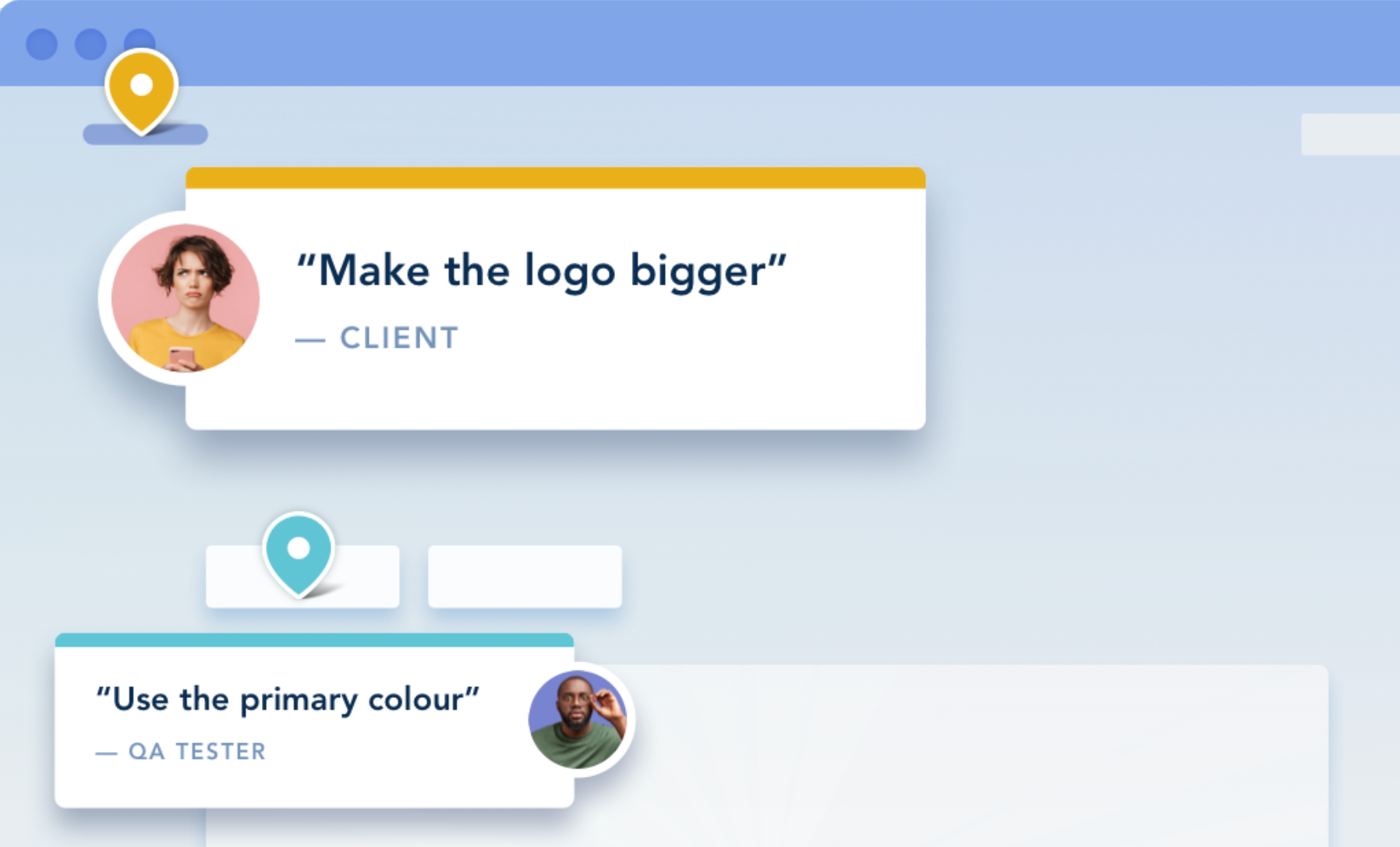As an account manager for a web development agency, you’ve got A LOT on your plate.
Scheduling and assigning tasks to team members. Communicating with your clients and internal team. Creating and maintaining a project schedule. Gathering feedback on sites you’re developing. The list goes on and on.
Fortunately, there are all sorts of account management software tools that you can employ to make your workday run a bit smoother. Unfortunately, there’s no one tool that does it all, so account managers need to be adept at juggling multiple tools along with multiple tasks.
From contact management to collaboration to bug tracking, here are the five account management tools that every web development agency needs.
Contents
1. The Five Account Management Tools You Need
2. Tools That Improve Client Communication
3. Tools That Improve Collaboration With Your Team
4. Tools That Increase Productivity
5. Tools to Schedule Appointments
The Five Account Management Tools You Need
There are five key account management tools that every agency needs:
- Client communication tools
- Collaboration tools
- Productivity tools
- Appointment scheduling tools
- Bug tracking tools
Each of these tools serves a different purpose, and there are endless software options for each one. Here’s why each of these tools is beneficial, plus our rundown of some of the most well-known, most respected, and most effective tools in each category.
Tools That Improve Client Communication
Without your clients, you have no business. But when you have a customer relationship management tool at your disposal, you can make the most of every interaction with every client and improve their experience so that they continue to work with your agency going forward.
CRM tools collect customer information and track customer interactions, helping you to:
- Improve client relationships
- Improve client retention
- Improve contact management
CRM software also allows you to create a project pipeline for every current client project, allowing you to improve on:
- Customizable workflow automation
- Real-time dashboards
- How you track finished projects and current projects
- Follow-up tactics to secure new client contracts
Depending on the agency, account managers may or may not play a role in the sales process. However, having a CRM platform makes it easier for all members of the team to access important data regarding each client.
There are many CRM platforms to choose from, and they vary in terms of pricing and features offered. Before choosing a CRM tool, compare and contrast options to ensure to find one that offers the features your particular agency needs.
Collect, manage and action website feedback from one location.
Tools That Improve Collaboration With Your Team

From the decision-makers that run your agency to your sales reps to those newly hired developers that need onboarding, having a tool that makes it easy to collaborate with your entire team is key to running a successful web development agency.
Collaboration tools are great for helping your team:
- Stay organized
- Keep up to date with current and upcoming projects
- Monitor project milestones
- Follow-up with clients during different stages of a project
- Streamline workflows
- Onboard new team members and new hires
Some of the top collaboration tools for agencies are:
- Kanzen
- Slack
- Teamwork
- Streamtime
- Monday.com
- Asana
Slack
Communicating with team members is easy as can be with Slack. This messaging platform offers flexible communication options, allowing users to chat, send audio or video clips, share and edit files, and keep track of conversations.
Both their desktop and mobile app integrate seamlessly with popular cloud-based storage solutions, including Google Drive and Dropbox.
Prices range from $7.25 per month per user to $12.50 per month per user, depending on the features you choose.
Teamwork
Teamwork makes communicating with your team a cinch and functions as a project management tool as much as it does a collaborative tool.
From the Teamwork dashboard, users can see all of their upcoming tasks, message other members on projects, share documents and files, manage conversations, and keep track of project milestones. It also allows for budget and expense management as well as workflow automation and time tracking.
Prices start at $9.99 per user per month for 20 customizable project templates. For unlimited project templates, you’ll need to contact Teamwork for a quote on their “Scale” plan.
Streamtime
In addition to Kanban boards that make it easy to track the progress of projects, Streamtime offers a host of other useful features, including quoting projects and invoicing, time tracking, and scheduling.
Because Streamtime offers so many features, it also offers options in terms of pricing. How you intend to use Streamtime will determine how much you pay. The number of clients you have, how many projects you have, and how many users need to access the platform also determine the price.
Check out the Streamtime pricing page for more info, plus a snapshot of what other clients are paying for the service.
Monday.com
With automations and real-time notifications, Monday.com makes it easy to stay on top of every project. Visual boards allow account managers to easily manage tasks and team members, and their mobile app is perfect for working when you’re on the go.
Plans with an unlimited number of users start at just $8 per month.
Asana
Asana is another popular collaboration tool that many agencies rely on to streamline workflows and track tasks. It integrates with a variety of other useful tools, including Zoom, CRM tools, standard Microsoft tools, and file-sharing tools such as Google Drive and Dropbox.
Asana is free to use for individuals and small teams, Agencies with more than 15 teammates can upgrade to the Premium plan for $10.99 per month or the Business plan for $24.99 per month. Asana also integrates with BugHerd so you can streamline website feedback and implementation within your existing workflow.
Related: How to Write an A+ Website Design Brief (Avoid Costly Mistakes, Miscommunication, and Timeline Blow-outs)
Tools That Increase Productivity
Account management tools that increase productivity are a must in every agency. After all, it’s all about working smarter, not harder.
Some task management tools are designed specifically to increase productivity amongst all members of your internal team.
With these you can:
- Stay up to date on deadlines
- Prioritize tasks for better project management
- Ensure that you’re tackling your to-do list based on priority
- Keep track of how much time you spend on specific tasks
Two well-known productivity tools to consider are Todoist and Week Plan.
Todoist
With Todoist you can create the ultimate to-do list, and doing so can help you manage, prioritize, and track how much time you spend on each item on that list. You can create daily and weekly task lists, break big projects down into smaller, more manageable micro-tasks, and receive reports that provide an in-depth analysis of your time.
Research shows that time tracking increases productivity because it helps you identify where you’re wasting time. When you know where you’re wasting time, it’s easier to eliminate the tasks that eat up valuable time in the day.
Todoist makes it evident when and how you waste time so you can better structure your day for a more productive outcome.
Free and paid-for plans are available.
Week Plan
The entire purpose of Week Plan is to make you more productive. Week Plan allows you to set a list of quarterly goals, break those goals down into tasks, prioritize those tasks, and see a weekly view of what needs to be done when.
Week Plan offers time tracking features as well. It also lets you estimate how you think you’ll spend your time for the day and then compare your estimations to an end-of-the-day report to see how you did.
Week Plan costs $104 for an annual subscription.
Tools to Schedule Appointments

Whether you need to hold a meeting regarding customer support services, improving the overall functionality of your team, or account planning for key accounts, you’ll need a way to schedule those meetings. Emailing back and forth amongst multiple team members or clients is NOT the way to do it.
There are many different appointment and meeting scheduling tools that can be used between account managers and internal team members as well as your sales team and existing clients or potential new customers.
Whether you’re planning an in-person or a virtual meeting, two of the top appointment scheduling tools are Arrangr and Calendly.
Arrangr
With Arrangr you don’t have to email back and forth to nail down a time to meet. Instead, you can send a few date and time options for recipients to choose from, send a meeting request and let them choose the date and time, or send a block of time that you can schedule them within.
Arrangr also connects with dozens of other apps and tools, including Google Calendar, Slack, Hubspot, Zoom, and OpenTable (if you’re planning to meet over lunch or dinner). Tentative meeting times, as well as confirmed meetings, go directly into your integrated calendar so you’ll never have to worry about double booking.
A basic Arrangr membership is free. A PRO membership costs $3.99 per month.
Calendly
Calendly is simple, straightforward, and easy to use, making it an excellent option for both small businesses and large agencies.
Calendly automates the scheduling process by sharing your availability calendar and letting recipients choose the time that works for them. Calendly also sends confirmation texts and post-meeting follow-up links when applicable.
Calendly is free for individuals to use, but you can upgrade to a team membership for $16 per user per month.
Hold Virtual Meetings with GoToMeeting
With all of the cool and nerdy Zoom backgrounds that exist, Zoom is still the go-to platform for video conferences. But if you’re looking for something a little bit different, check out GoToMeeting.
GoToMeeting allows you to hold meetings with up to 250 participants, and they can choose if they want to partake with or without video. Once your meeting is scheduled, simply send participants a link. With a simple click, they’ll be able to join your meeting without wasting any time downloading or creating a login to access the platform.
Every web development agency needs a bug tracking tool.
Bug tracking tools detect defects in a website while it’s in the development stage and sometimes immediately after the website launches. These tools collect and organize feedback to send to the web developers. The developers then act on that feedback to make changes as requested by the client to improve the look, functionality, or performance of the site.
The end goal for every web development agency is to provide the best possible website to the client, and bug tracking tools make that possible.
BugHerd: The Best Bug Tracking Tool for Web Development Agencies
BugHerd works differently than other bug tracking tools. This tool can save developers hours per week in QA and UAT, as the feedback gets posted directly on each page in the form of what can only be described as a digital sticky note.
Account managers and developers often find themselves spending valuable time sifting through ambiguous feedback in emails and conference call notes. BugHerd makes feedback actionable and easy to address, making both account managers and developers more productive and helping them deliver the site to the client sooner.
BugHerd offers four different pricing plans depending on how many members need access. Check out the monthly pricing plans or sign up for a free 14-day trial now.
Account managers, you do a lot. We think it’s time you let technology do some (more) of the hard work for you.
Between your clients and your internal team, juggling all of your everyday tasks can sometimes seem impossible, but it’s not.
Make use of tools that:
- Improve client communication
- Improve team collaboration
- Increase productivity
- Manage workflows
- Schedule meetings and appointments
- Increase performance with bug tracking software
- Analyze your data and performance
There is no one tool that will do it all, but with the right combination of tools in your arsenal, you can ease your workload in a shorter amount of time than you may think.


















But don't just take our word for it.
BugHerd is loved by 10,000+ companies,
350,000+ users across 172 countries.
4.8/5
4.7/5
4.5/5
5/5
8.7/10
Sam Duncan 📱📏 🌱
@SamWPaquet
"@bugherd where have you been all my life??
We just migrated our bug tracking over from Asana and have at least halved our software testing time🪳👏📈. "
Ashley Groenveld
Project Manager
“I use BugHerd all day every day. It has sped up our implementation tenfold.”
Sasha Shevelev
Webcoda Co-founder
"Before Bugherd, clients would try to send screenshots with scribbles we couldn't decipher or dozens of emails with issues we were often unable to recreate."
Mark B
Developer
“A no-brainer purchase for any agency or development team.”
Kate L
Director of Operations
"Vital tool for our digital marketing agency.”
Paul Tegall
Delivery Manager
"Loving BugHerd! It's making collecting feedback from non-tech users so much easier."
Daniel Billingham
Senior Product Designer
“The ideal feedback and collaboration tool that supports the needs of clients, designers, project managers, and developers.”
Chris S
CEO & Creative Director
“Our clients LOVE it”
Emily VonSydow
Web Development Director
“BugHerd probably saves us
at least 3-4hrs per week.”